A relatively new addition to Hanwag’s extensive range of walking boots and shoes, the Makra Pro GTX is one of the German bootmaker’s more technical offerings.
Consisting of four different models, the Makra product lines cover specific areas of use in alpine terrain. First, there’s the Makra Trek GTX, intended for easier mountain tours and hut-to-hut trips.
Then there’s the Makra Light, which is built for easier climbing and via ferratas. Third is the Makra Pro Low, a low-cut (well, duh) approach shoe version of the Makra Pro boot.
Both the Pro boot and shoe are built for demanding, technical terrain, but the crampon compatibility of the Makra Pro boot also makes it suitable for easier high-alpine mountaineering. Since it’s been developed for demanding mountain routes, including those that involve crossing glaciers in crampons, it looks to be a great candidate for year-round UK use too.
However, the real USP is that unlike a lot of other mountain boots, the Makra Pro also aims to be exceptionally comfortable and accommodating, even on longer mountain days. That’s because it’s built on the brand’s roomier Alpine Wide Last, which is better suited to longer yomps.
However, the boot is still rigid enough to cope with steeper, rocky ground and stiff enough to use with C1 or C2 crampons.
Pros
- Robust and durable
- Great build quality
- Comfortable and well-padded
- Accommodating fit
Cons
- Not as neat or precise as some rivals
- Not the most capable on steeper ground
| RRP: | £300 / $420 |
| Sizes: | Men’s UK 6-13, women’s UK 3.5-9 |
| Upper: | Perwanger suede leather and textile |
| Waterproof lining: | Gore-Tex Performance Comfort |
| Weight: | 655g / 1 lbs 7 oz (per boot; size UK 8) |
Design and features
As we’ve come to expect from Hanwag, this is an extremely well-built boot. It’s made in Europe – Croatia, to be precise – from high-quality Perwanger suede leather uppers.
An extended rubber rand delivers good abrasion resistance and foot protection, while a raised heel counter helps to lock the foot in place effectively.
The ankle cuff is luxuriously well-padded, while the rear of the boot has a cutaway section to relieve pressure on the Achilles. It’s extremely comfortable, especially on level ground and when descending.
The boot lacks the stretch gaiter panels of other mountain boots, though, which does mean that grit and debris can occasionally find its way in, especially when crossing scree.
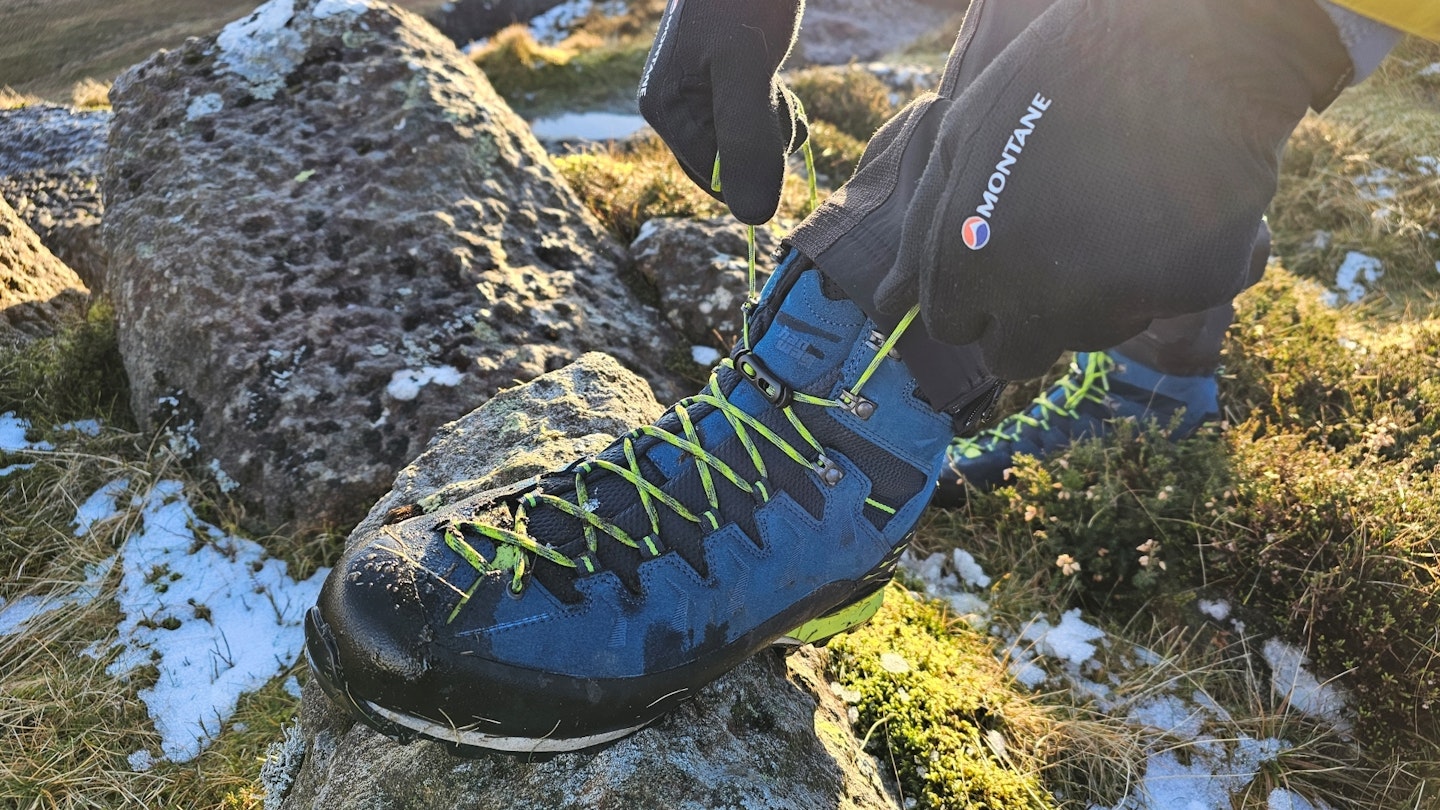
The midsole is a combination of PU and EVA foam rubbers, with a TPU insert at the heel to enable fitting of a semi-automatic crampon. PU is used at the heel, giving firmer cushioning that shouldn’t collapse over time, while softer EVA is used at the forefoot.
The outsole is a Vibram Makra pattern, developed especially for this series of Hanwag boots. It’s a typical mountaineering lug arrangement consisting of triangular central lugs for traction on softer surfaces and blockier lugs at the outside edges for contact grip on rock.
There’s a prominent heel brake for downhill grip, plus a forward climbing zone at the toe, though the curved rocker profile of the sole makes it a little less effective than on more climbing-focused rivals.
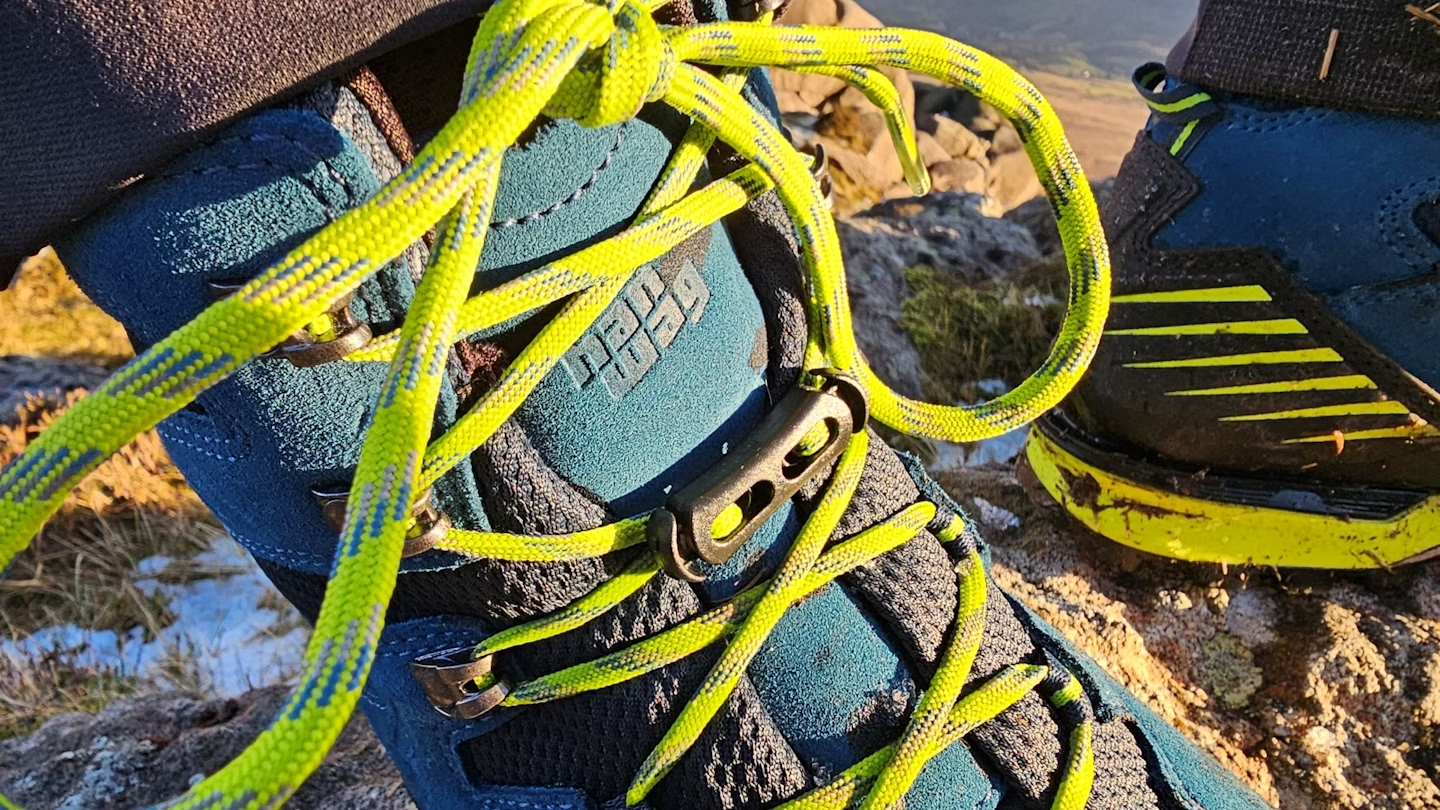
I love the lacing system, though. This boot uses a different locking system to most. Rather than conventional clamping lace hooks at the base of the ankle, the Makra instead features a mechanical lace lock in the form of a plastic toggle. It’s extremely secure, never slips and really helps to pull the boot in tight at the heel.
It also has the benefit that the bottom set of lace hooks are closed loops, making it less likely to pose a trip hazard when the laces are tied.
The lacing extends right down towards the toe, ghilly-style, through a series of webbing loops and a bottom metal eyelet. This ensures a secure fit around the front of the foot, and good overall stability.
Performance and comfort
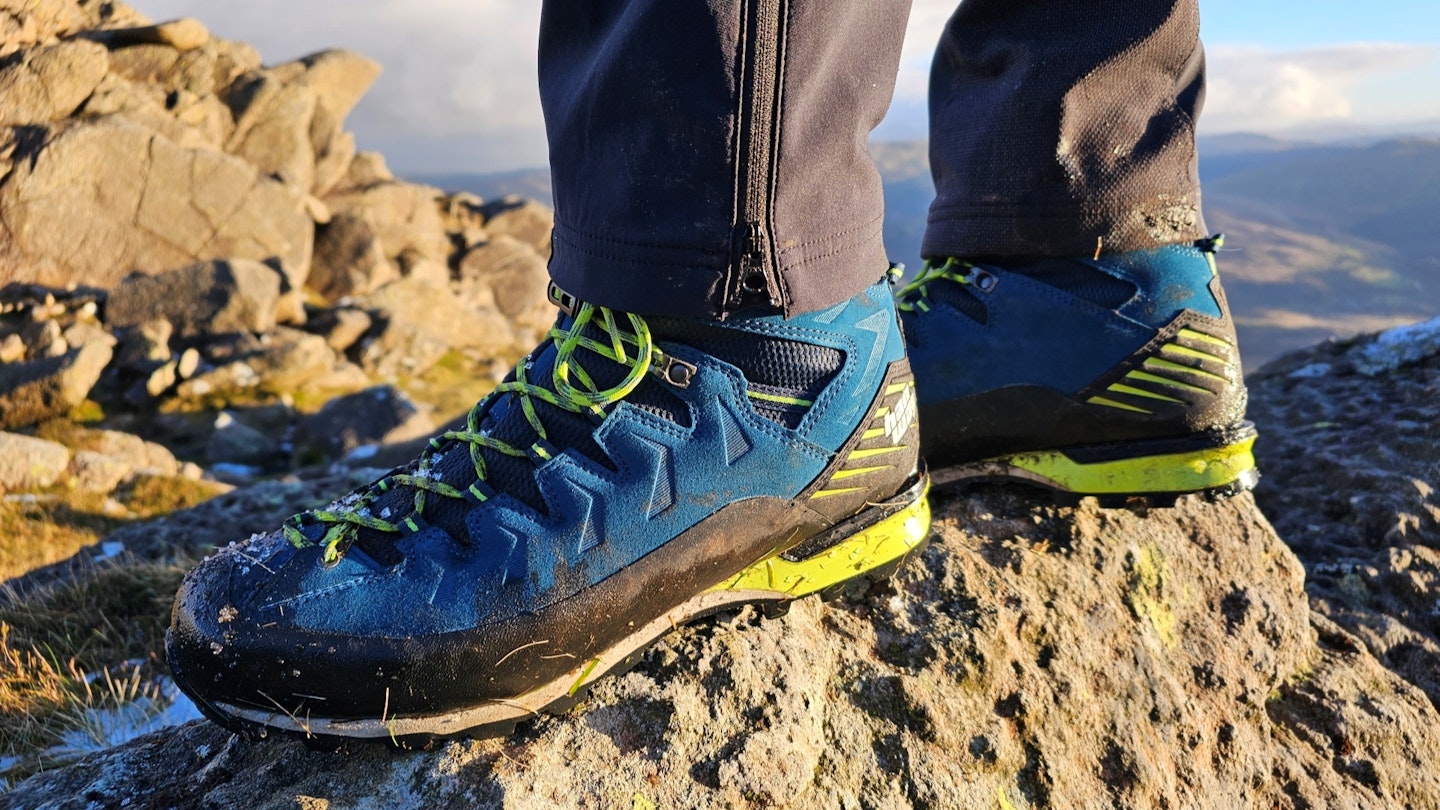
The overall fit is more accommodating than most mountain boots, with a generous forefoot thanks to that wider ‘Alpine last’. This makes for great all-day comfort, and of all the boots I tested in this category recently, this is the one I'd pick for the highest mileage days.
On the flipside, this means it doesn’t feel quite as neat, precise or agile as some rivals, notably the Salewa Ortles Light, AKU Viaz DFS and the La Sportiva Trango Tech.
It’s unlikely to pose a problem in most situations, except on particularly technical scrambles that demand the most careful footwork. However, I didn’t come unstuck on anything I tackled in Snowdonia, which ranged from classic ridge walks through to lower-grade scrambles.
The sole unit is moderately stiff but isn’t the most capable on the steepest ground. Put it this way – when it came to using hands as well as feet, I was happier in other boots I tested.
The chunkier build of the Makra Pro GTX made it hard to jam into smaller rock pockets, while the toe didn’t feel as secure on smaller ledges and holds. On the other hand, the Makra has a superior walking action for putting in long miles on flat or undulating terrain.
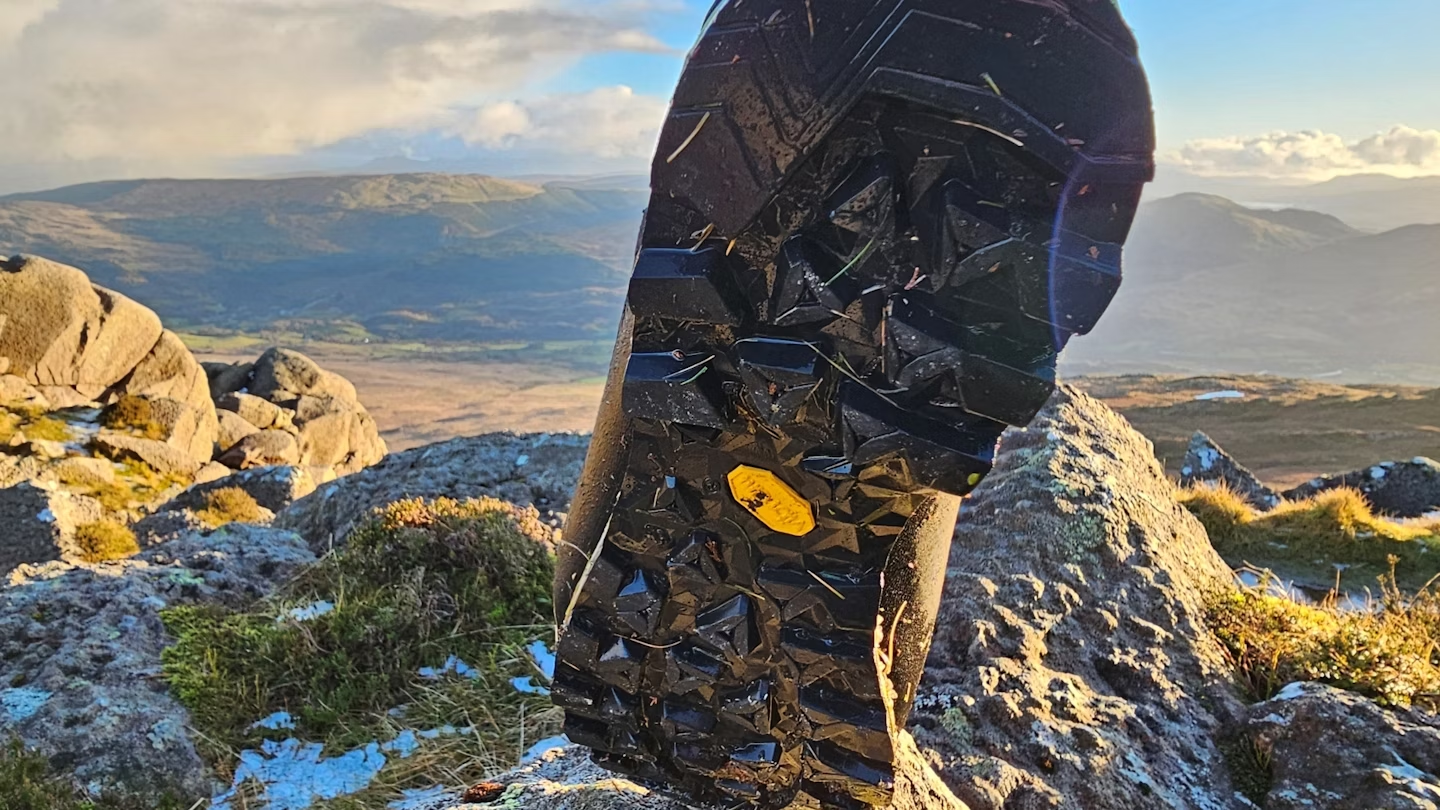
For a mountain boot, it’s also very plush in terms of cushioning and padding – both underfoot and around the ankle – without reducing too much ground feel or ankle mobility.
If you tend to feel footsore after a day in B2 boots, you’ll probably find these a lot more forgiving, and your soles will thank you, too.
It’s also very durable. The thick suede leather uppers and Gore-Tex liner proved reliably waterproof on test. This also adds warmth for colder conditions, which would be an undoubted plus with snow on the ground.
And if you do need to fit a crampon, the Makra Pro GTX copes well with a semi-automatic C2, providing a secure fit thanks to a prominent heel welt. Only the curvature of the rocker sole leaves a slight gap at the front of the crampon, but it’s not really an issue.
Sustainability
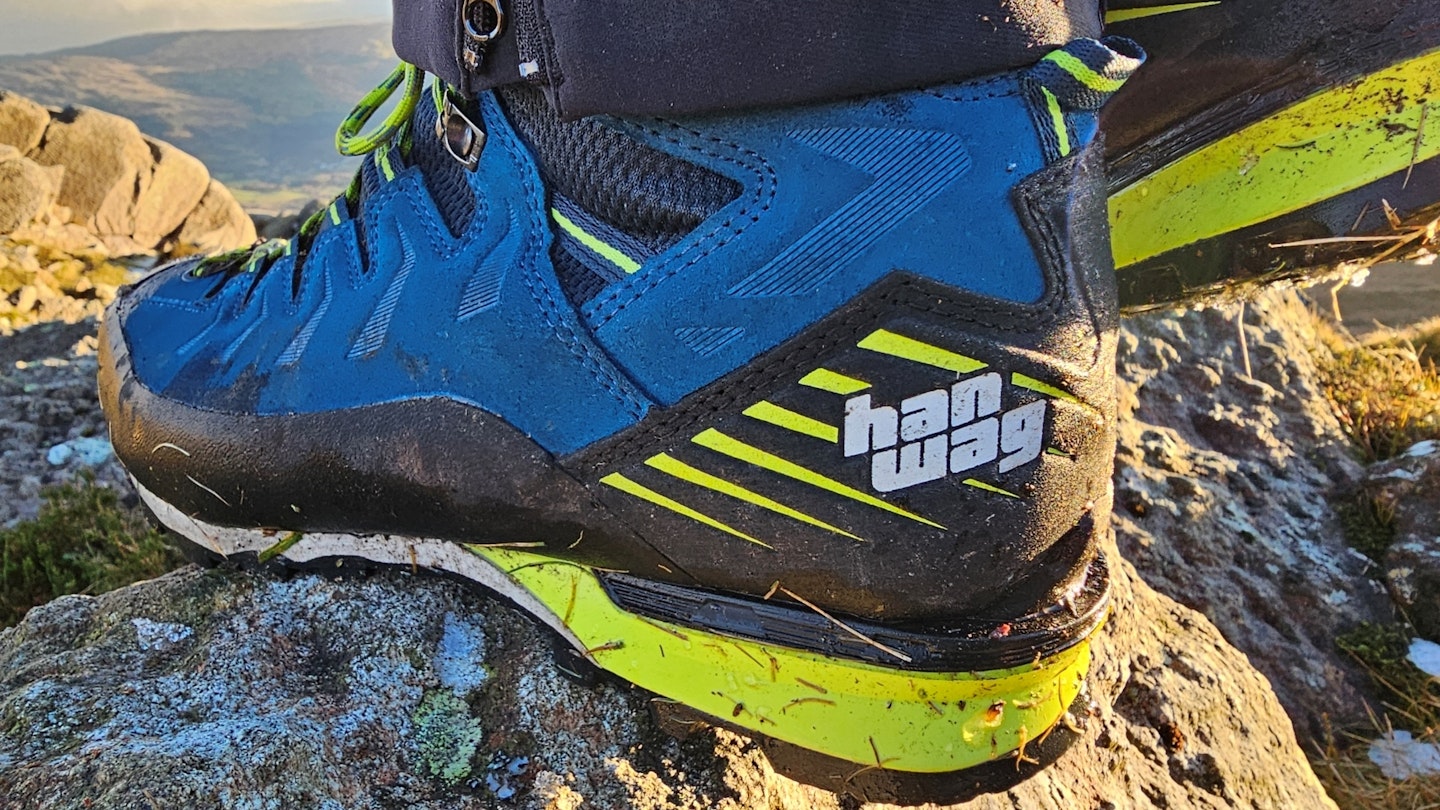
Being European-made isn’t necessarily a guarantee of superior quality, as many factories in the Far East turn out premium outdoor gear, but with most of the raw materials also sourced in Europe, this boot has a lower carbon footprint than those manufactured in the Far East.
European production also makes for easier monitoring and auditing of factory conditions and standards.
As a leather boot, the Makra Pro obviously isn’t vegan-friendly, but the leather hides are sourced as a by-product of food production, and the tanning process is also guaranteed chrome-free, minimising water pollution and chemical waste.
The use of high-quality leather should also ensure excellent durability, while the boots can also be resoled, further extending their effective lifespan.
Hanwag is a member of the Sustainable Apparel Coalition (SAC), while the brand’s parent company, the Fenix Outdoor Group, is a signatory of the UN Fashion Charter for Climate Action (UNFCCC).
Fenix is also a member of the Swedish Textile Initiative for Climate Action (STICA), and in the North American market, it cooperates with the Outdoor Industry Association's Climate Action Corps.
Price and competition

There are various boots that could be classed alongside the Makra Pro in the hybrid scrambling/alpine category, but for me, this is the most comfortable option I've tested.
That’s this boot’s real strength. Others are nimbler and lighter, but they all feel firmer underfoot, and lack the generous ankle padding of the Hanwag.
But if you’re willing to sacrifice that plushness for improved feel and precision – which is worth doing if you’re planning to tackle the most technical scrambles – then look at rivals like the Scarpa Zodiac Tech and the La Sportiva Trango Tech Leather.
Alternatively, if you want to save as many grams as possible, then go for a synthetic boot rather than a leather one (just be aware that durability may not match up long-term). For value, it’s hard to beat the Salewa Ortles Light Powertex Mid, and for outright performance, the AKU Viaz DFS GTX.
For the absolute lightest crampon-compatible boots on the market, turn to the Mammut Taiss Light Mid GTX or the Danner Crag Rat Evo (but be prepared to pay a premium, as both are expensive, at a hefty £370 each).
Verdict
The Hanwag Makra Pro GTX is a sturdy, supremely well-built boot with an accommodating fit and high comfort levels, plus the technical capability for year-round use. But others feel a bit more agile and precise on steeper ground.
For more choice, see our list of the best leather walking boots.
Shop this product
About the author

Matt Jones is a freelance journalist based in the heart of Snowdonia National Park, he’s a vastly experienced gear tester and self-confessed outdoor kit geek. Matt’s been one of our main gear testers for the last couple of years and is the first person we call with any complicated kit queries that need in-depth and forensic analysis.

